Getting a task from the art director in 2011. We need to come up with new automobile license plates with coats of arms in place of region codes. The numbering should be infinite and the new typeface has to be cool. The first female designer starts to work on the task. Soon she comes back with her ideas.
Designer: I’ve done the most obvious first. I haven’t added the coats of arms yet. I think, if I ever do something on the road, would it not be easier to just remember the numbers instead of this complex colored blob? Or am I wrong? I’ve radically changed the system only on regular and government plates. Everything below uses traditional combinations of letters and numbers.
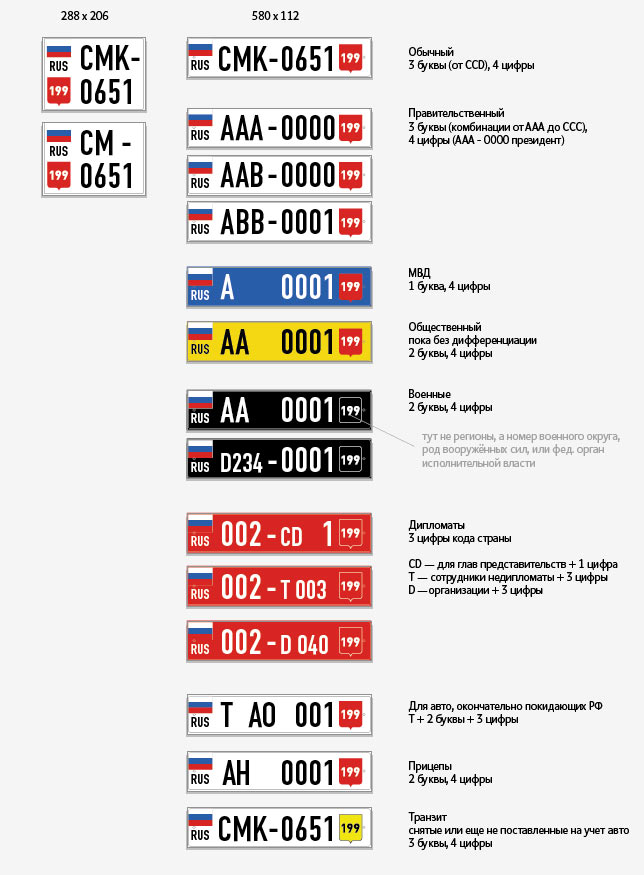
As for the typeface, DIN would be my first choice, but we should take a look at what the Germans did when they used glyphs that can’t be easily forged into other symbols.
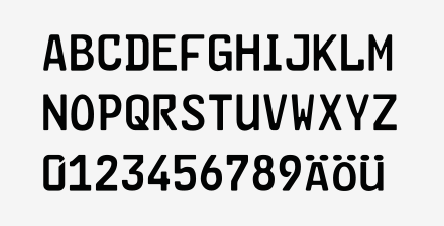
Art director: All right, go on, don’t stop :-) What you said about coats of arms is bullshit.
Designer: At this stage my brain wants to count the overall number of combinations for regular vehicles that the current system and the new design offer to see the difference. It might be possible to alter the ratio of numbers and letters. I can’t generate ideas without some sort of a base. Or are there easier ways to do that?
Art director: Is it too difficult to just count?
Designer: No, but I won’t have an answer tomorrow. Cool problem, thank you :-)
A week goes by.
Designer: The new system has 3 digits and 4 Latin letters which gives us almost 176 million combinations. Today I decided that it’s too much and I can cut down the number tenfold by removing one digit. Government plates will also change and have 440 000 combinations. But if we use 3 digits and 3 letters, designating letters from AAA to CCC to government cars will cut down the number of regular plates by 27 000. The rest will maintain the traditional scheme in the new design.
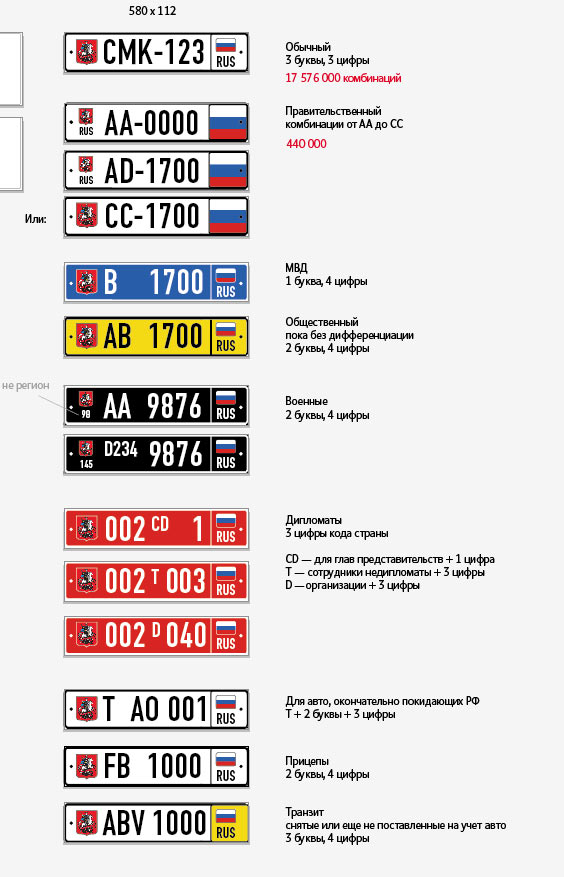
I also couldn’t help but try an alternative design.
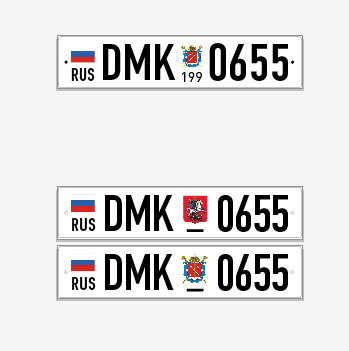
Also, I want the typeface to be more Russian. I can’t really explain what I mean by this just yet.
Art director: I can’t see why you are so bothered with the current license plate distribution scheme. We don’t care what the government bodies want to do with their plates, this has nothing to do with our concept. The dash is noise. A flag and a coat of arms on the same plate is trash.
Designer: Then like this. I’ll create more tomorrow.
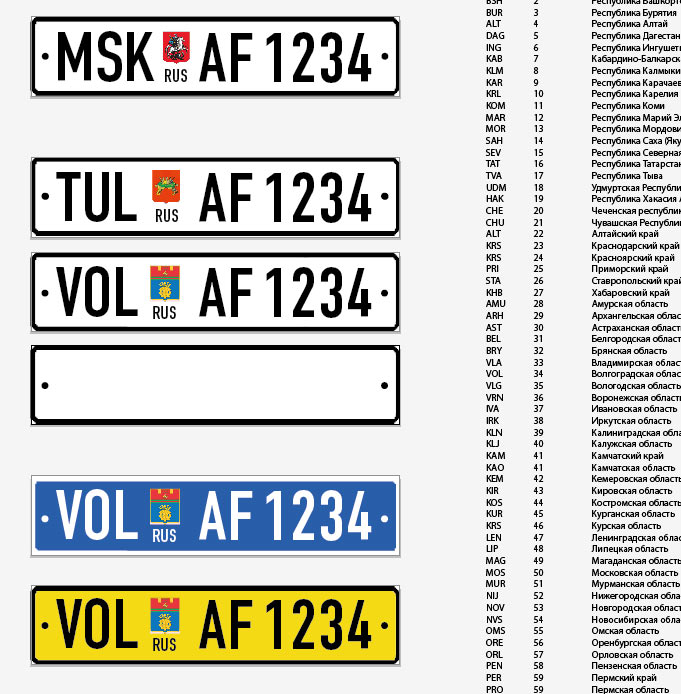
Art director: Better. I want the digits and the numbers to be more Russian. Right now they look Polish.
Designer:
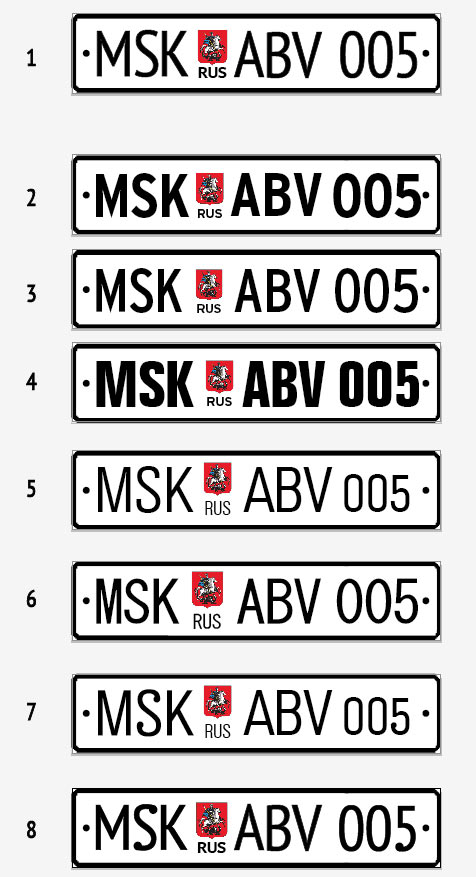
Numbers 7 and 8 are severely mutated versions of 5 and 1. I’ll generate more later.
Five years pass. Another designer takes on the project. The art director sends him the idea, the sketch and asks to improve.

Designer: Before counting combinations, we need to define the set of symbols we are going to use. Using the entire Latin alphabet would lead to problems. Numbers sometimes need to be read aloud:
—to find documents at a service station;
—to locate a driver in a shopping center;
—to give the license plate of a taxi to the customer.
That’s when things like “S like the dollar sign” or “P as the Russian Р” or “V as a tick” start to appear.
Besides, there are more drivers than email users, it’s going to be hard for some of them.
I think we shouldn’t use symbols that can be easily confused:
S (can be confused with C)
P (can be confused with R)
H (can be confused with N or X)
U (can be confused with Y)
I (can be confused with E)
V (can be confused with B)
Next: J and Q don’t have verbal analogs in Russian and can be confused with G and K / KY.
W is also confusing, is it “wee” or “vee” or even the long “double U?”
There is also a way to pronounce abbreviations using names such as James, Quentin, William. We don’t use that in Russian and even if we did, we would pronounce these names differently, giving us D, K and Y instead of J, Q and W.
Overall, if we remove all potentially confusing letters, we have 17 remaining.
Art director: Good.
Designer: Which gives us an optimal combination of four letters and two digits placed in pairs: two letters, two letters, two digits.

Three pairs of symbols are easy to remember and pronounce, they’re just like a phone number. This will give us 45,7 million combinations (versus 1,7 million provided by today’s plates).
There are 4,5 million vehicles in Moscow. Given the constant 5% annual growth, this should last 47 years. Or 25 years in case of a 10% growth.
After that, a simple permutation will give us 45,7 million more combinations:
45 AA BB
And again:
AA 45 BB
Then:
AA B2 C3
A1 B2 CC
A1 BB C3
...
AA 2B 3C
1A 2B CC
1A BB 3C
The principle: four letters and two digits that form easy to remember pairs.
As for special plates, it would be great to keep their current colors to make sure they are visible from a distance, although the coats of arms might blend in.


I suggest using different combinations.
Private.

Passenger.

Government.

Military.

One of the benefits is that this approach will yield even more combinations.
The drawback is that this is a more subtle difference compared to color coding.
However, if we fill only the number part with color, this will prevent the problem with the coats of arms blending in.

Art director: Yes, but it has the same problem we saw in the first sketches, lack of symmetry, which ruins everything. Just use a white background behind the coats of arms.
Designer: All right, then two digits and four letters. By default, two digits come first allowing us to create a whole bunch of really cool combinations.

As for the number of plates, to start we can use only digits to show series and letters for the actual number. The plates will be easier to remember and look more traditional. In the future, letters and digits can be mixed together, giving us an almost infinite number of combinations.
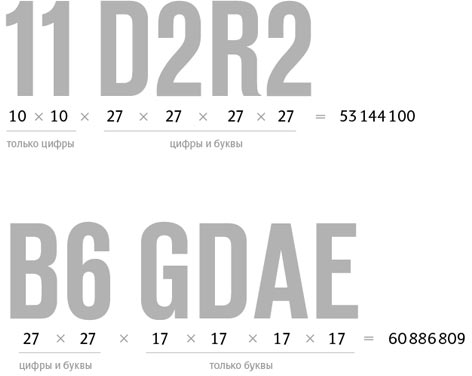
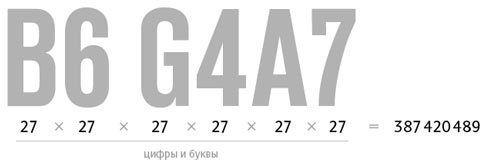
The art director approves. Looking at abbreviations for Russia’s regions. There are official geographic codes.
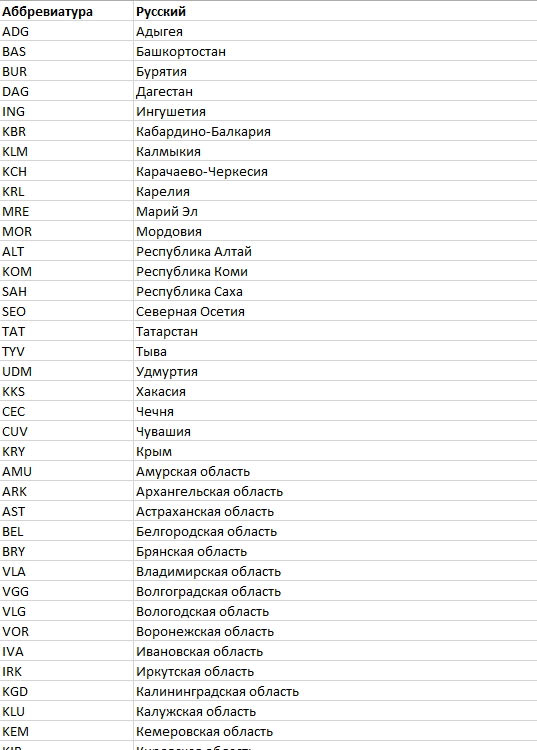
But those, it seems, were developed for other reasons, probably to simply provide an abbreviated name to each region, not to make those abbreviations easily understandable. Otherwise, how can one understand what KKS, ULY or KYA mean? Or why CHE is Chelyabinsk Region and not Chechnya? And CHU—is it Chukotka or Chuvashia? And how to distinguish between Sakha and Sakhalin if one word is part of the other?
Coming up with new designations that will be easier to understand on the road.
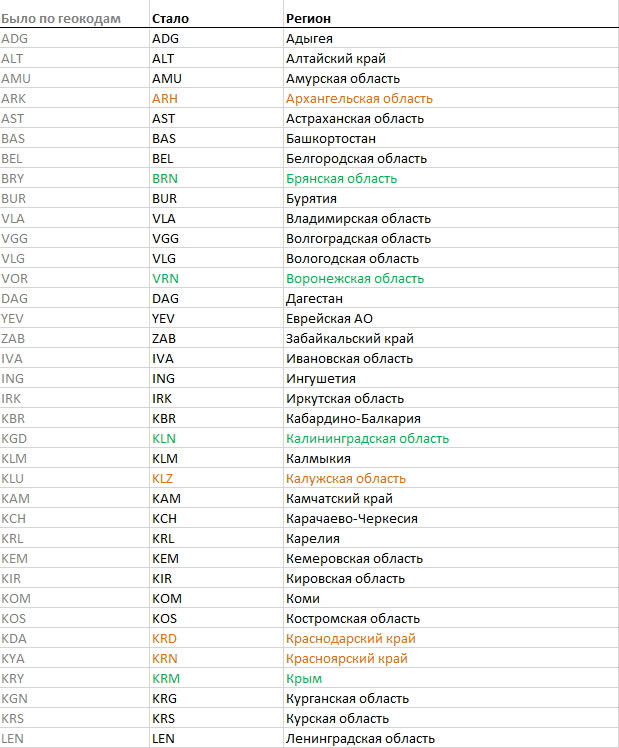
Asking the type designer to work on letters. He makes the first attempt.
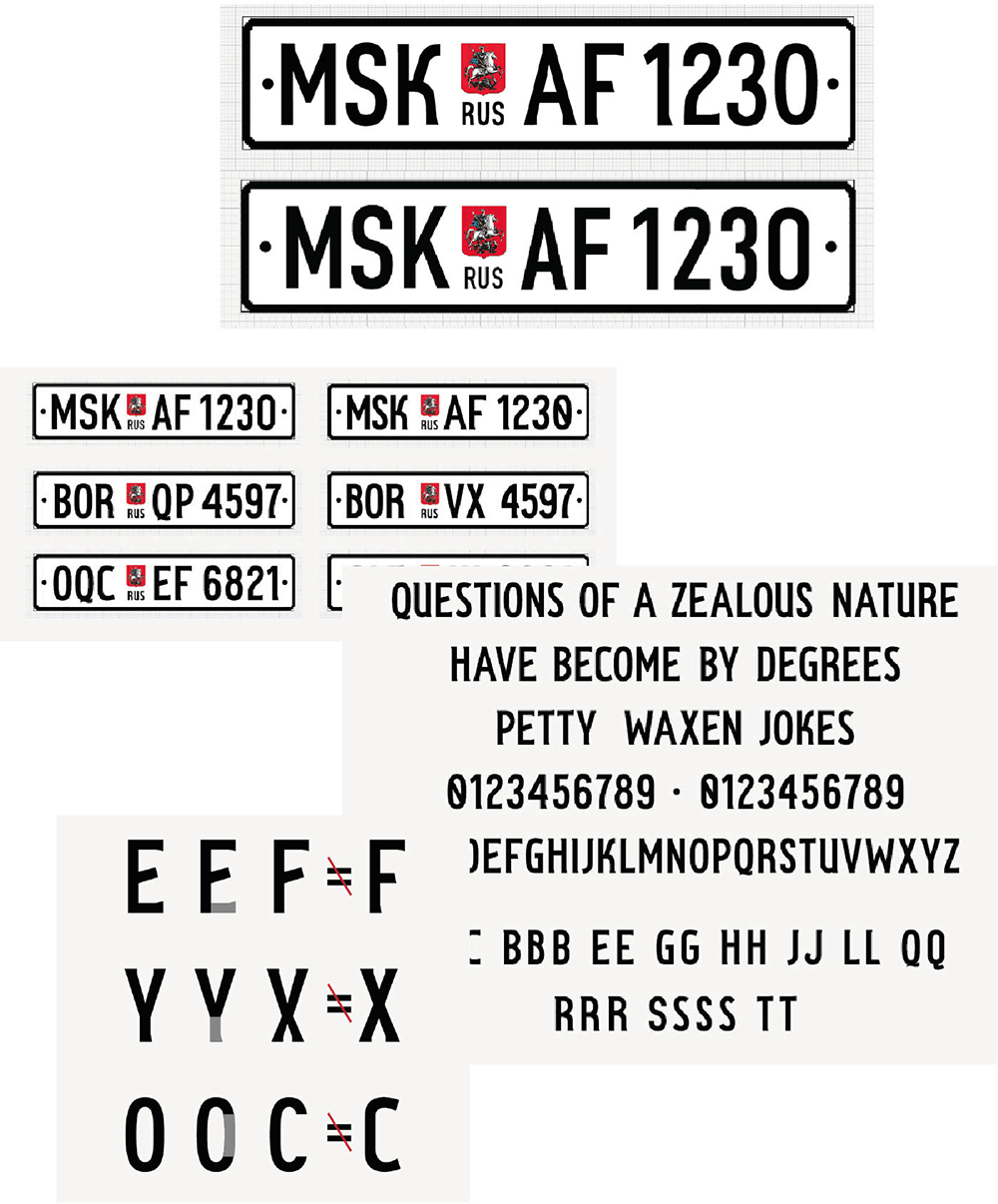
The art director suggests to get rid of all modernity and Spanishness.

Also trying to foresee future alternative plates and open shapes.
Art director: The W should not fall apart. The 8 should not look like a Matryoshka doll. The 4 should not look like a North Korean digit. In K, the arm and leg should both grow from one place.
Trying again, equalizing letter width and making digits slightly narrower.
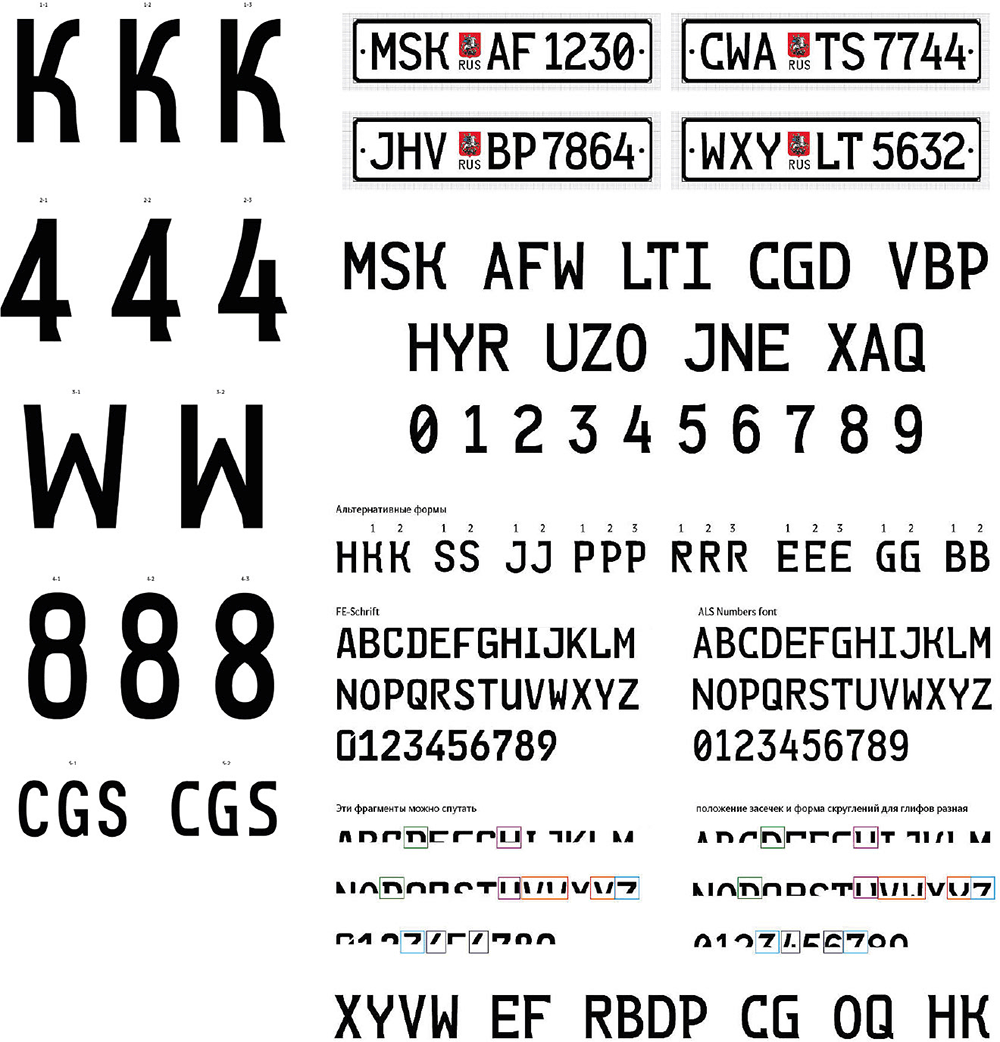
Nope, too much noise. Starting again.
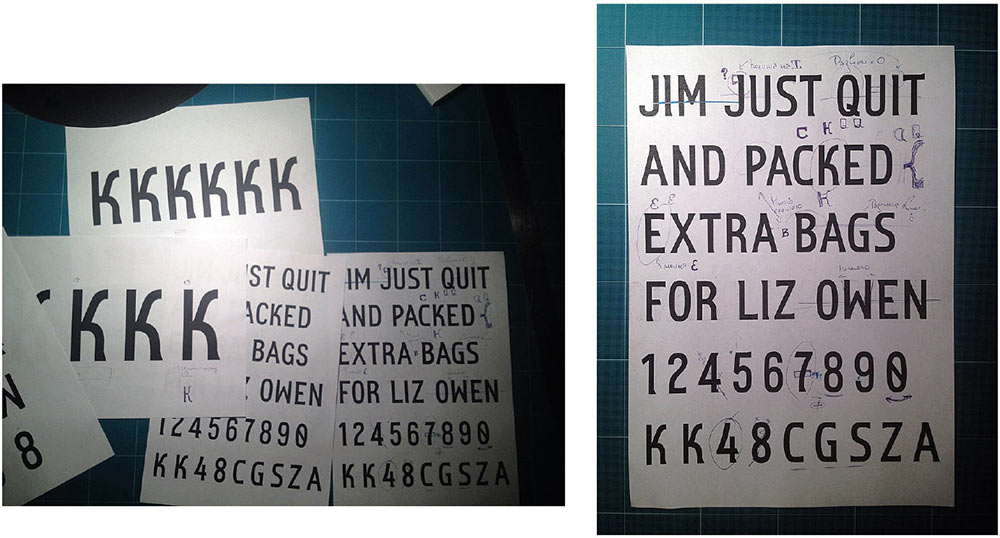
It’s important to make top parts of the letters different.

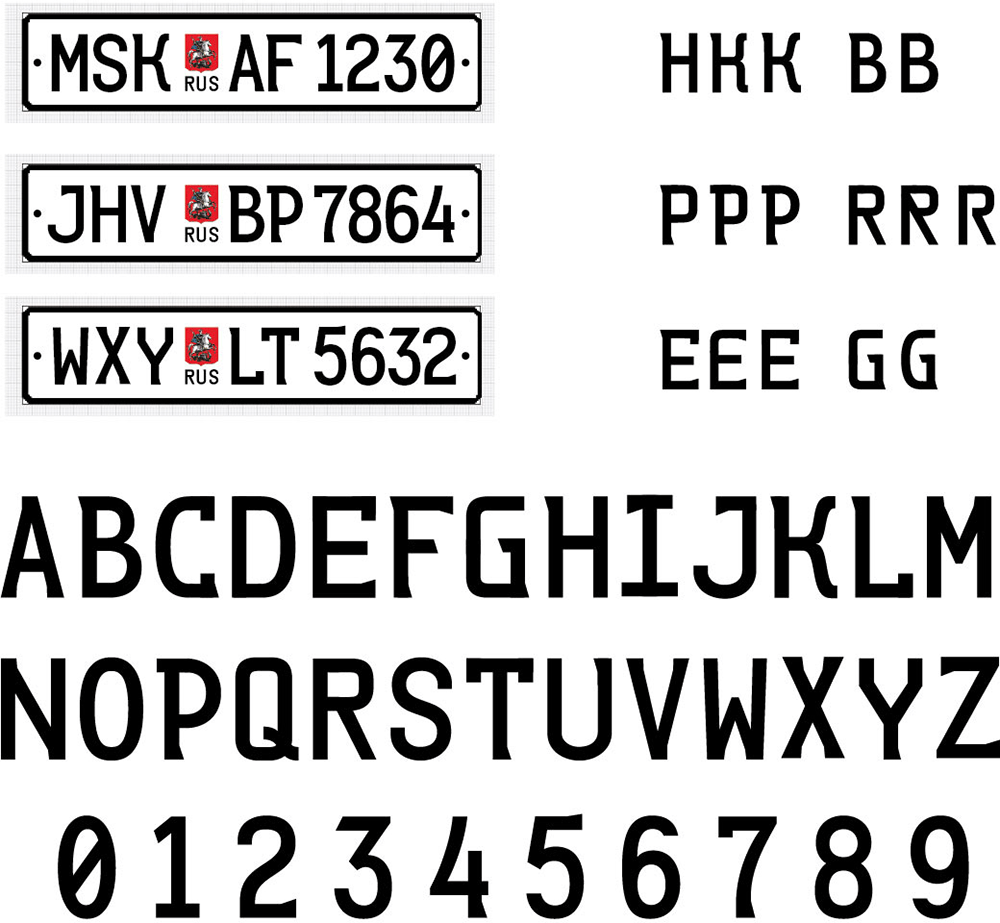
Changing proportions and trying to make the letters larger.
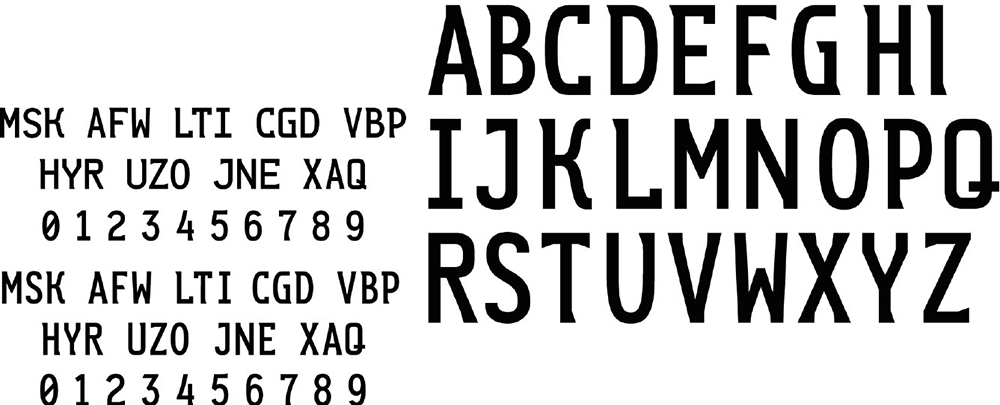
Comparing the result with the first attempt.

Adding alternatives.
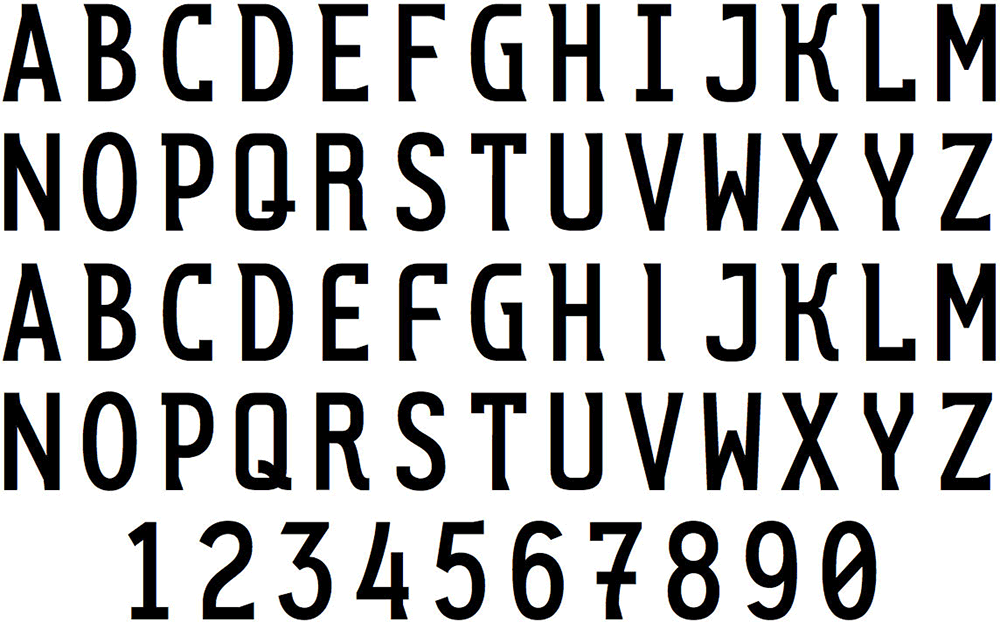
Trying the result on mock-ups.
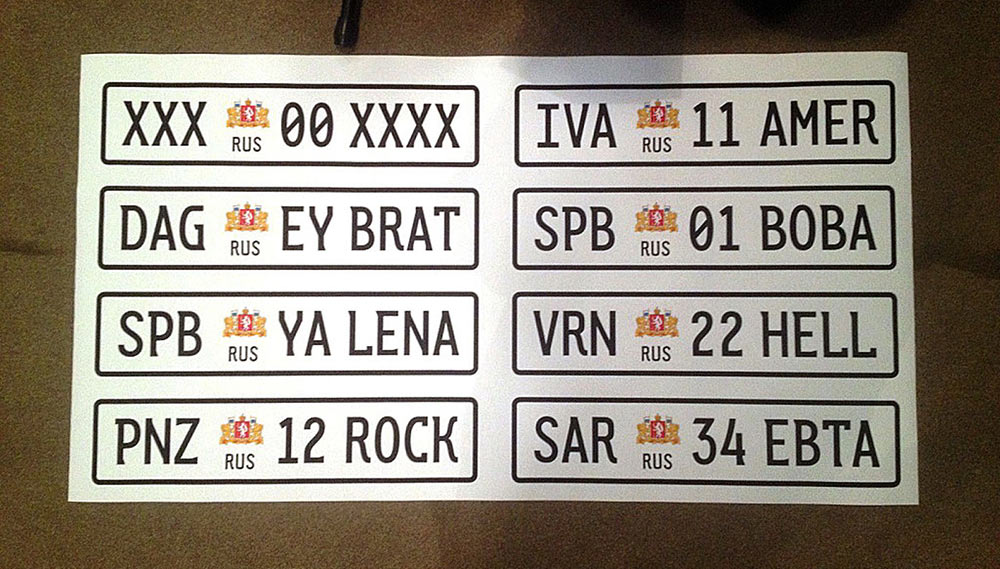
Sending to designers.
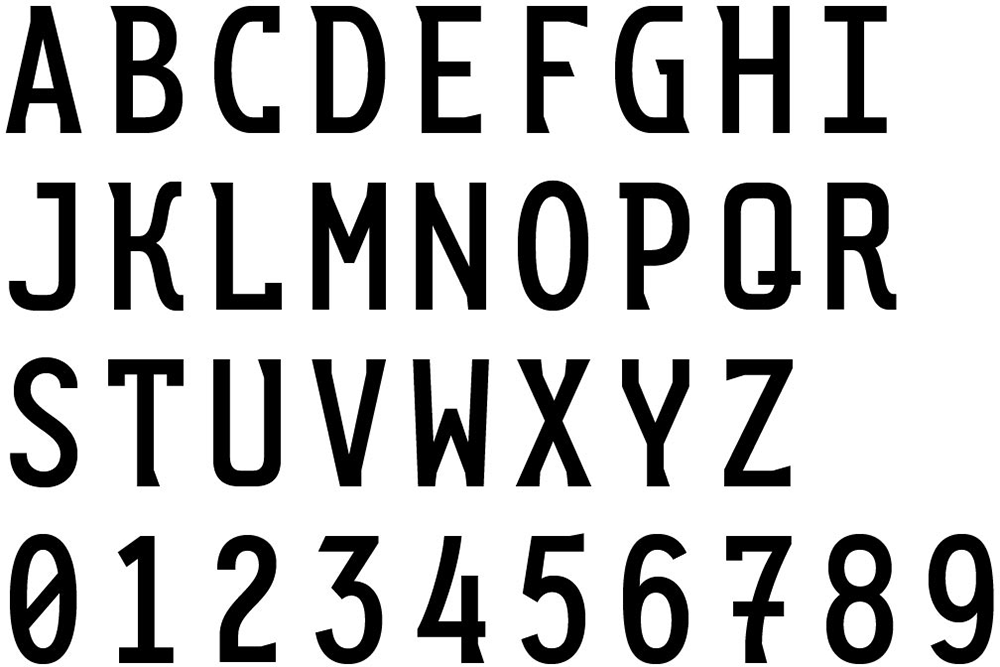
Changing the layout to match real-life dimensions.

Preparing the announcement.